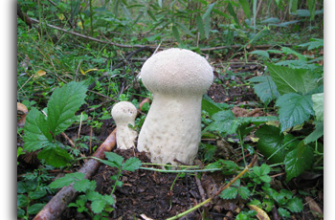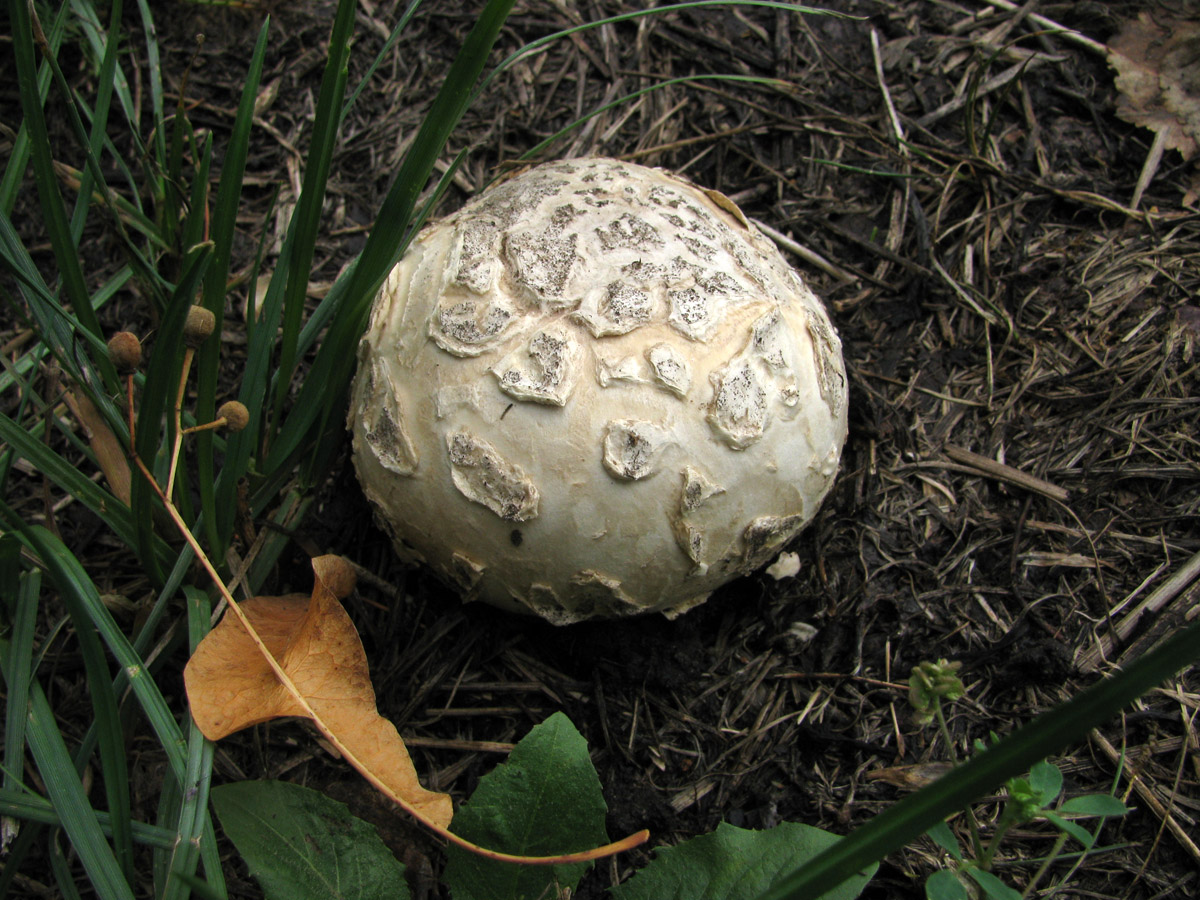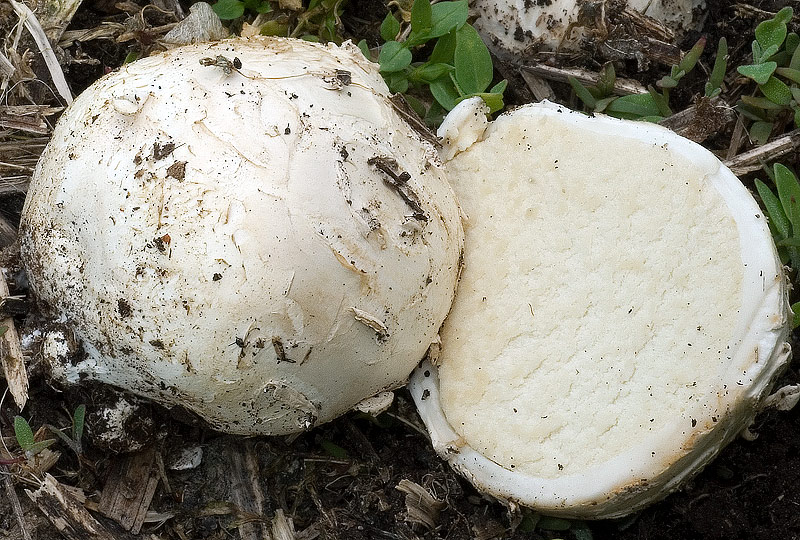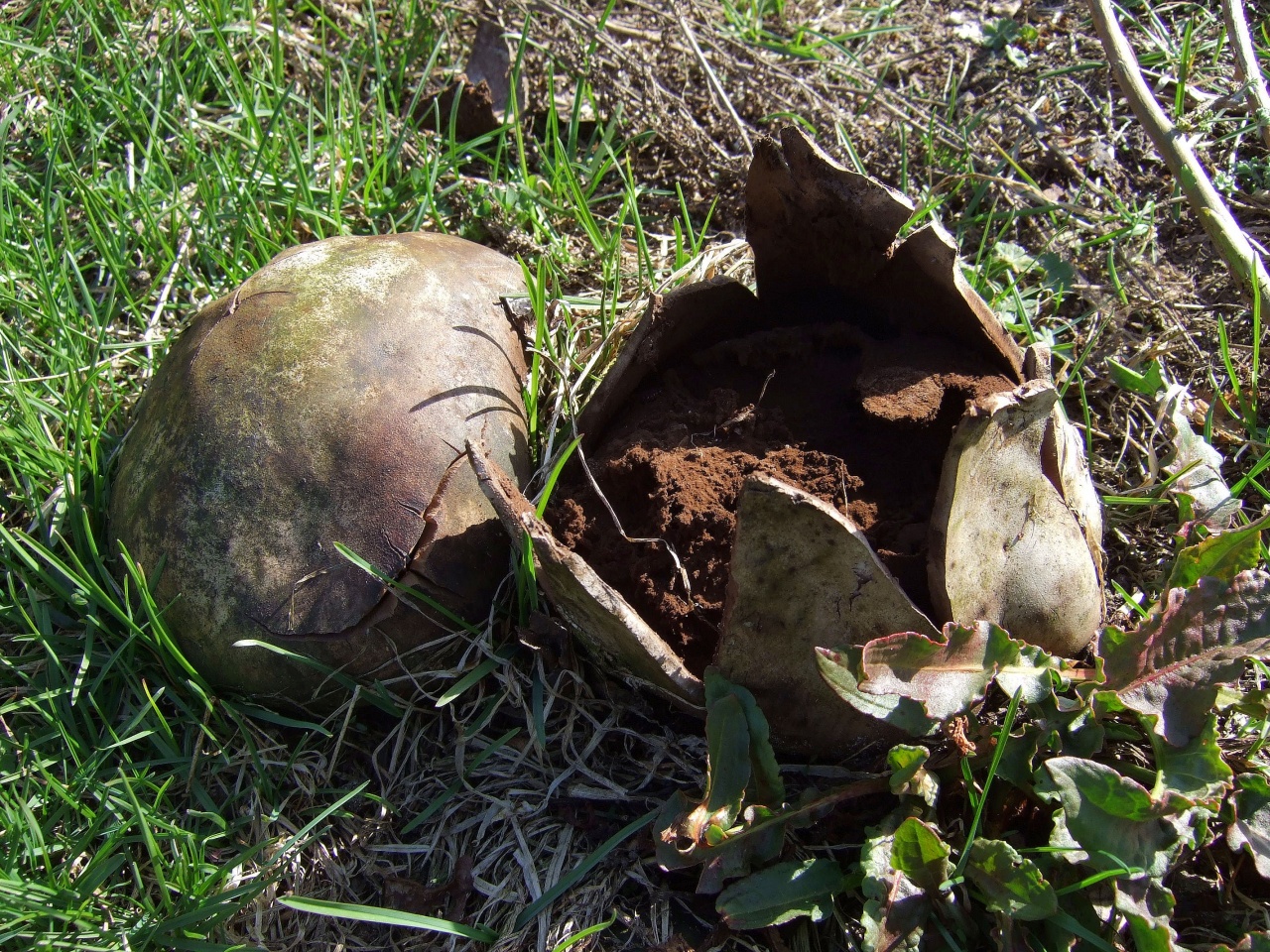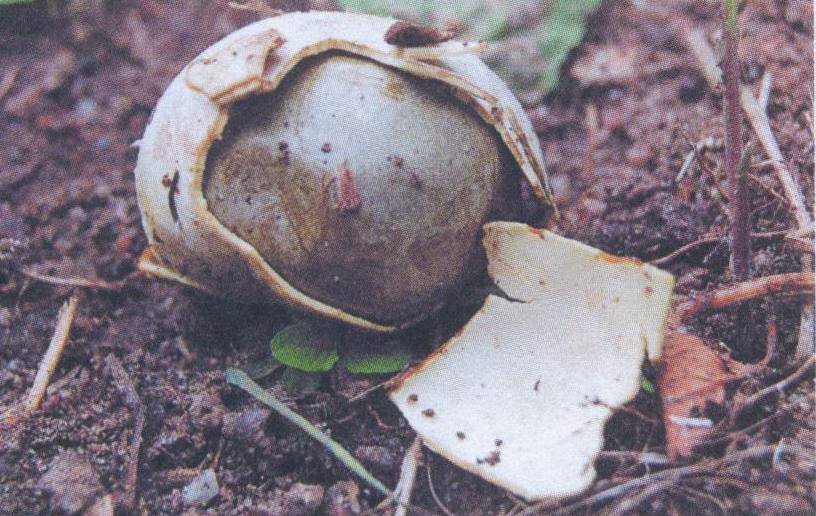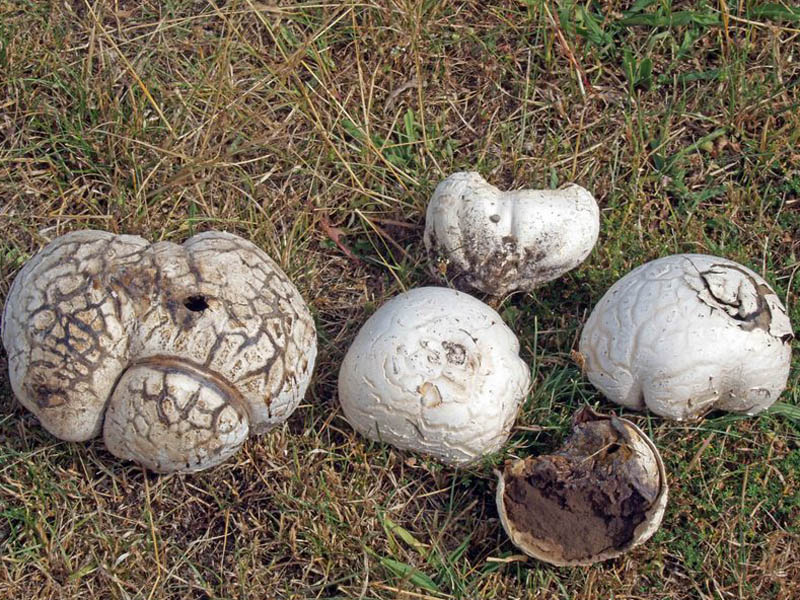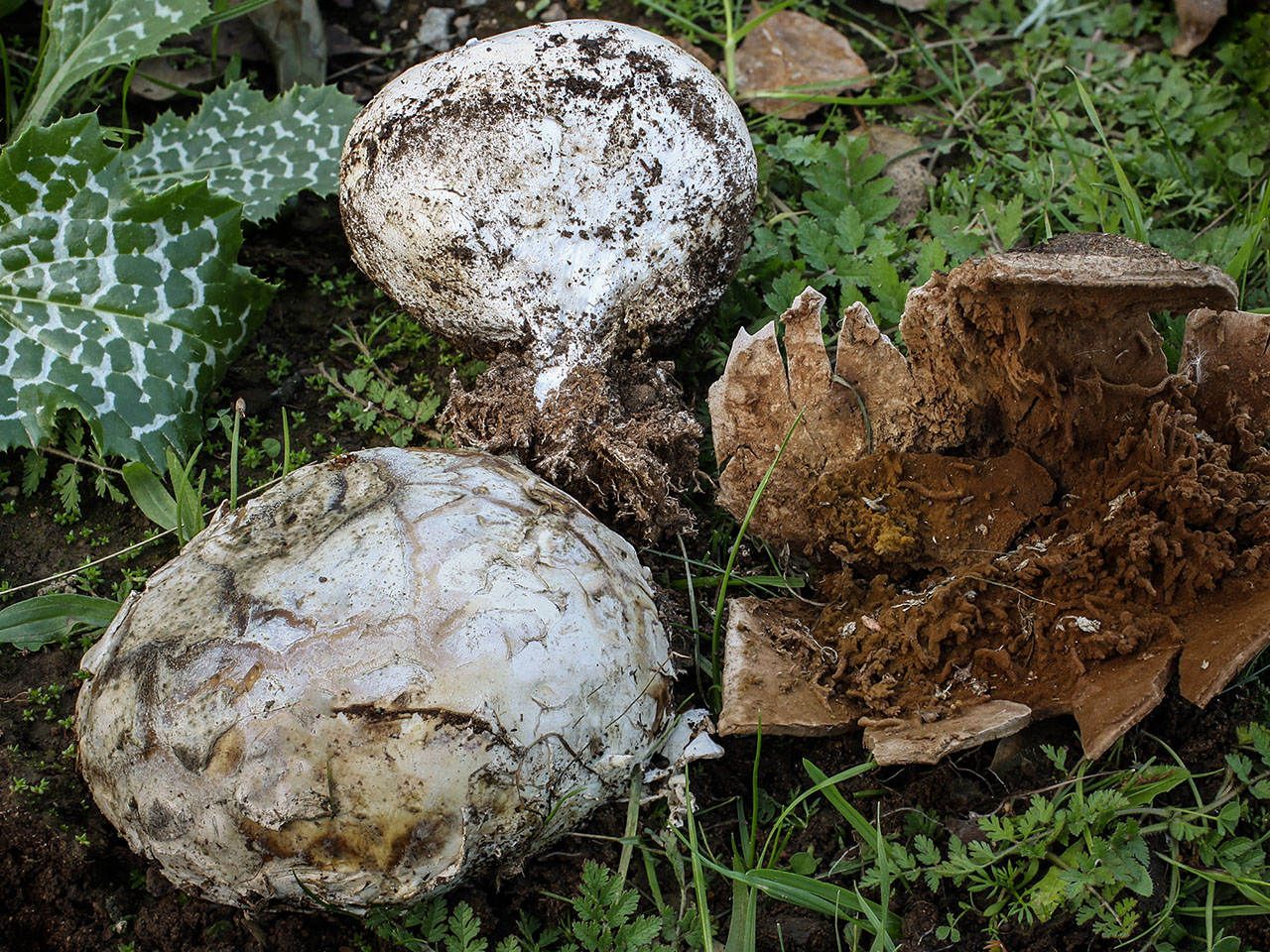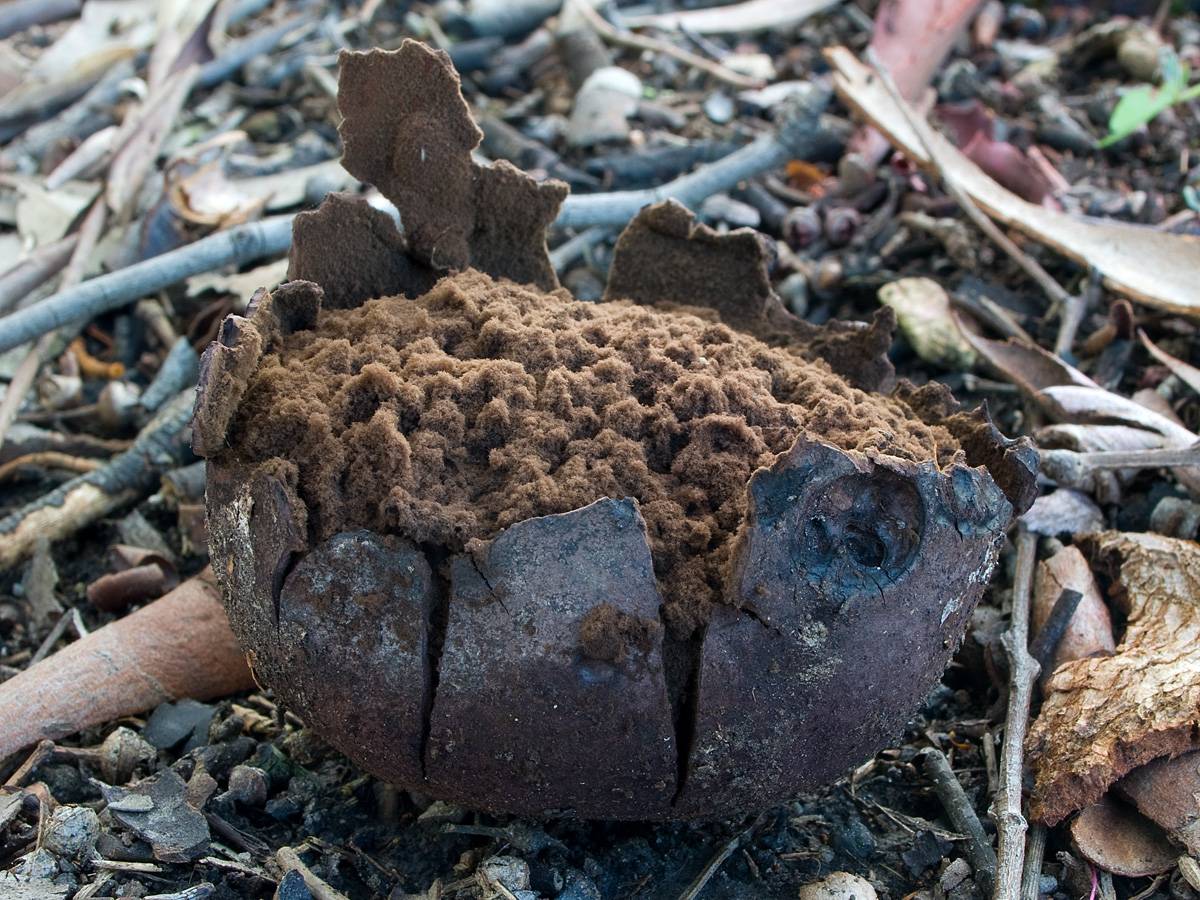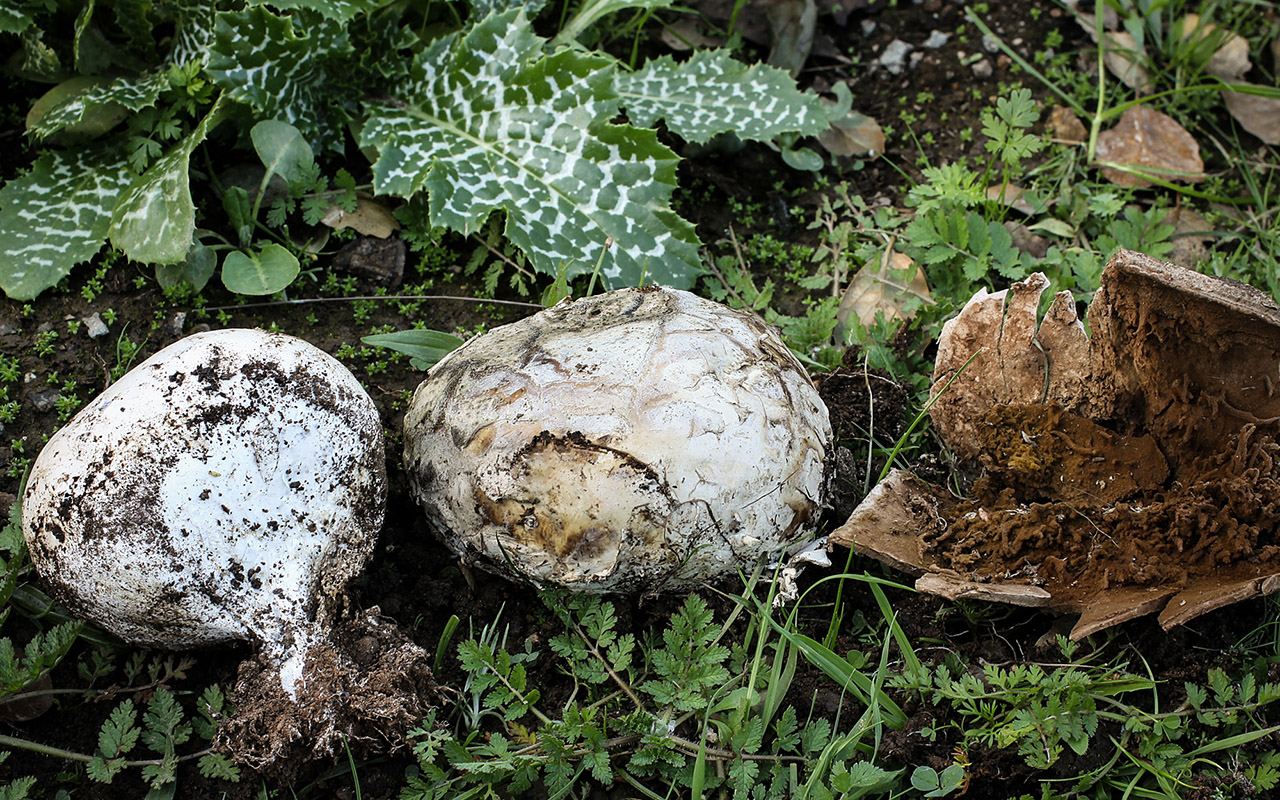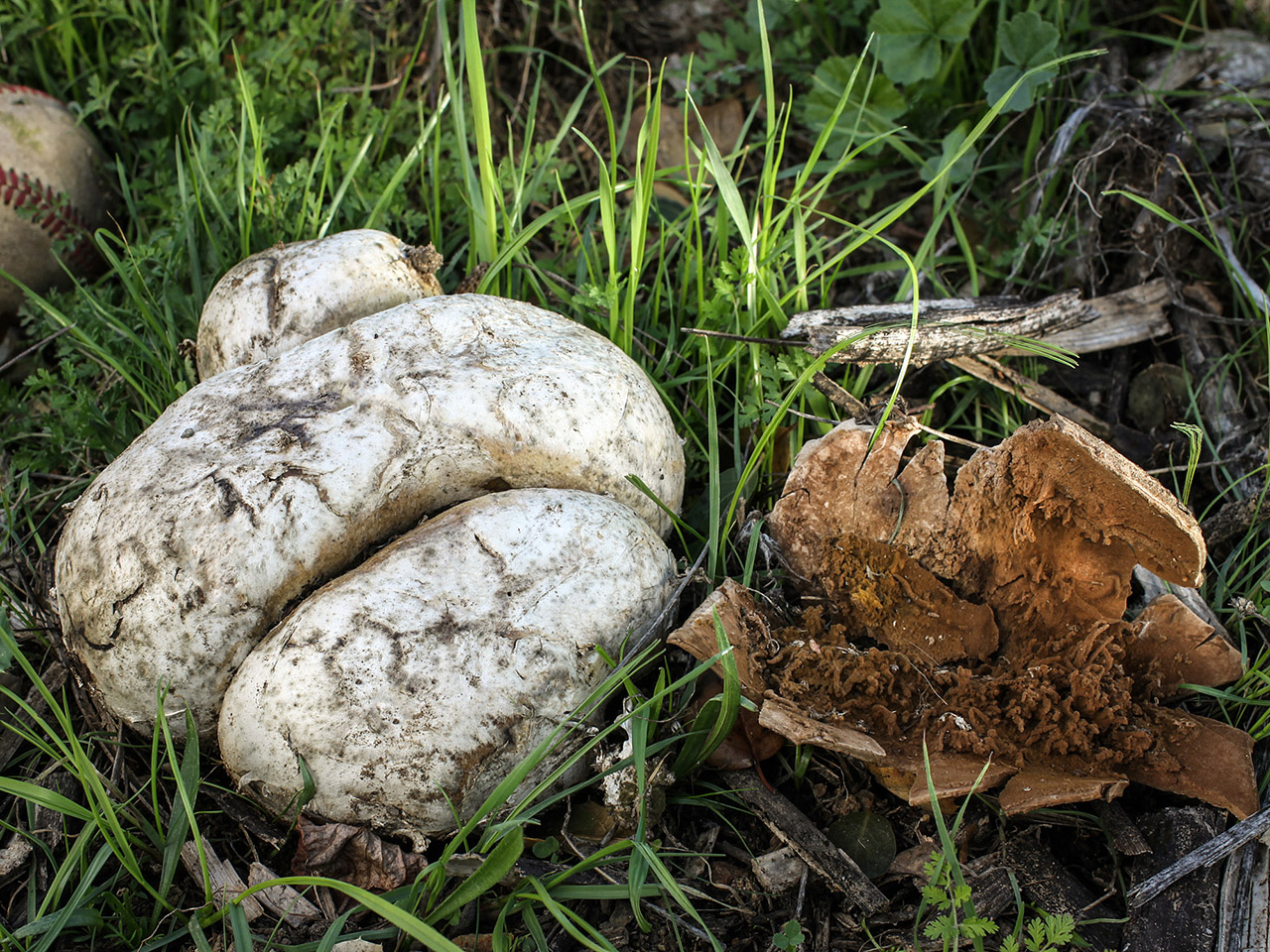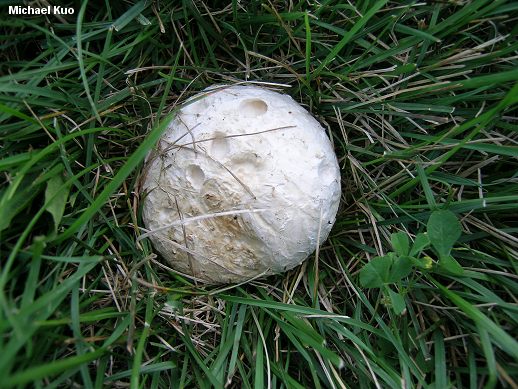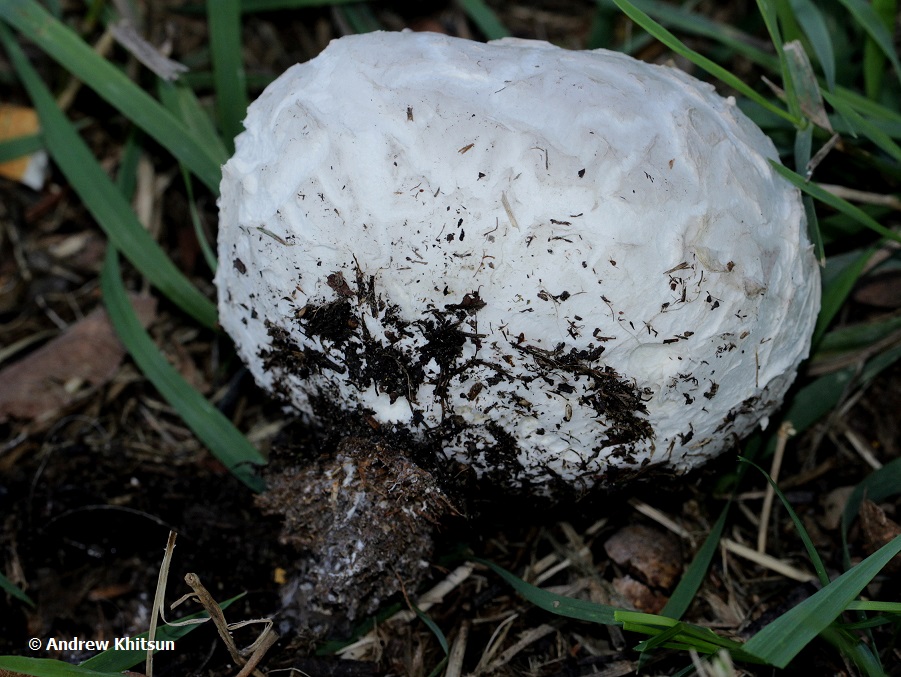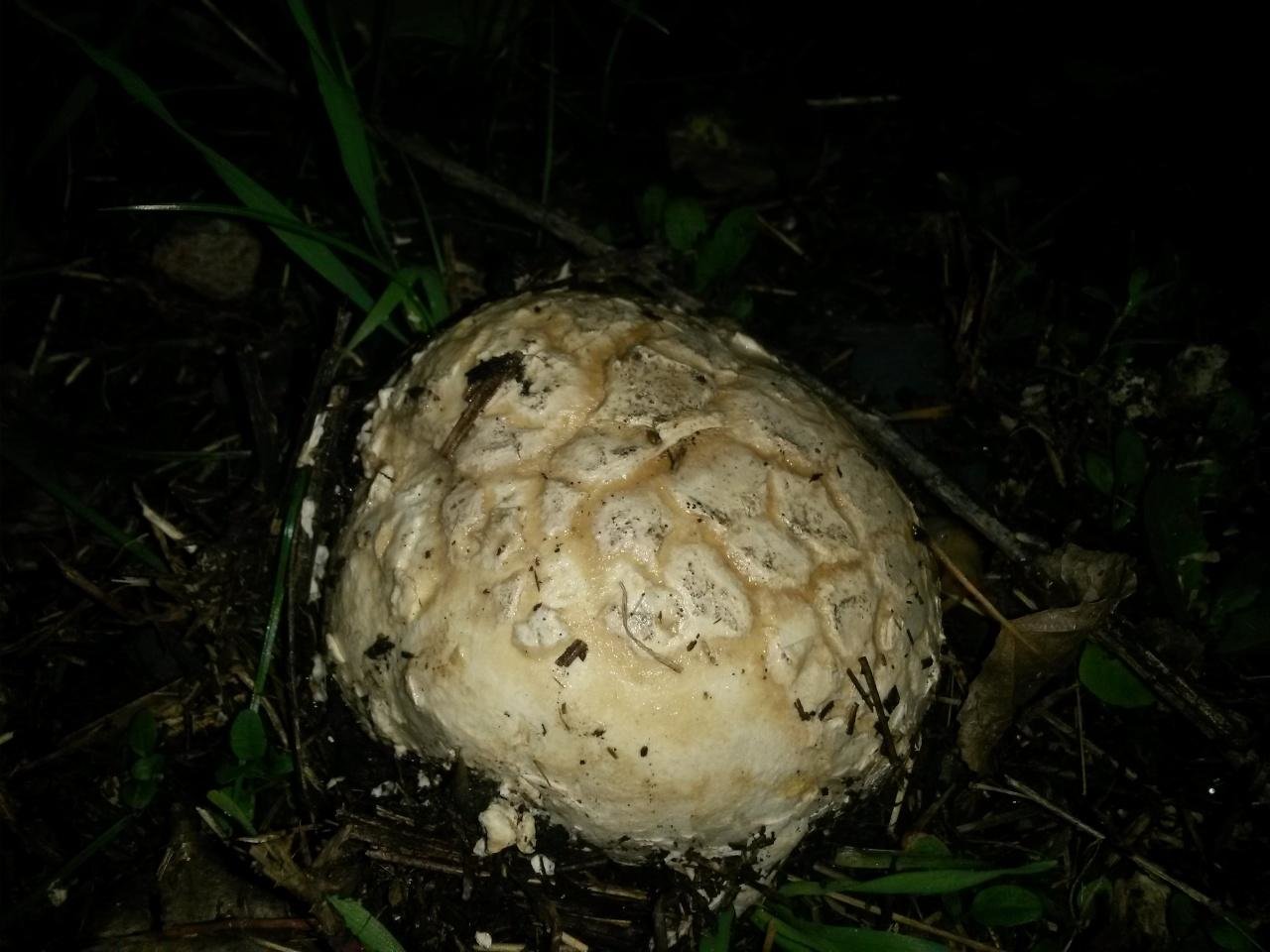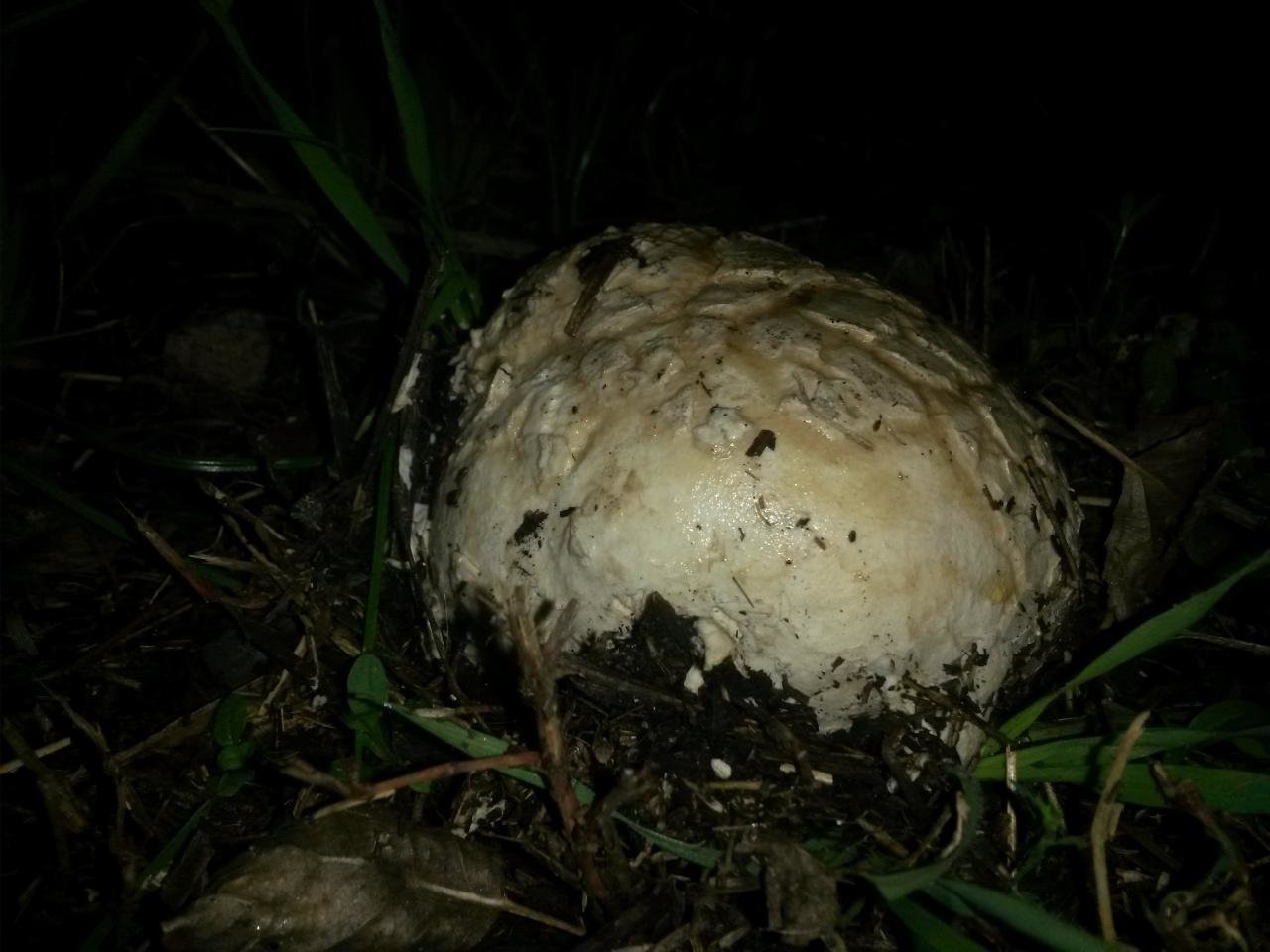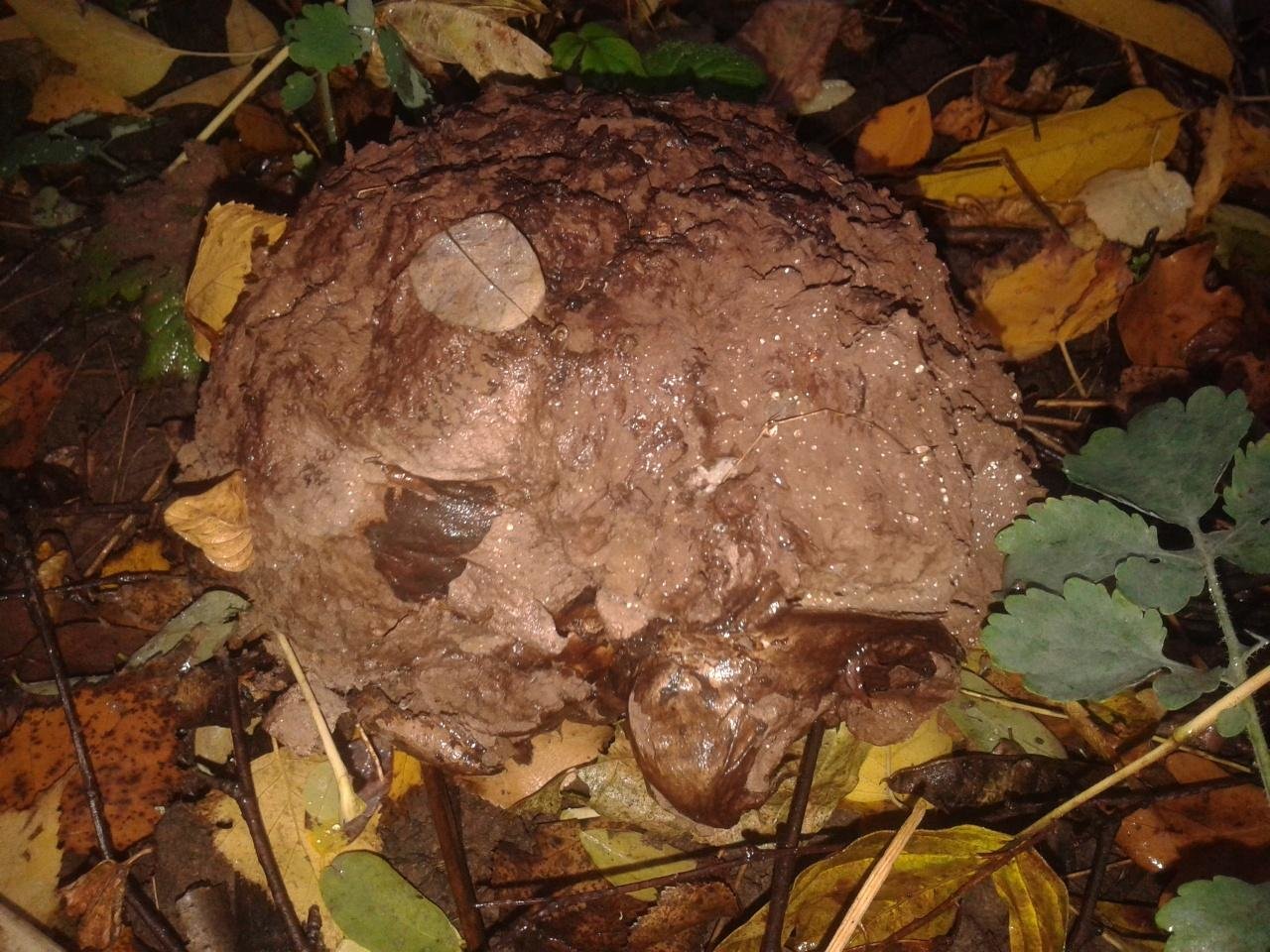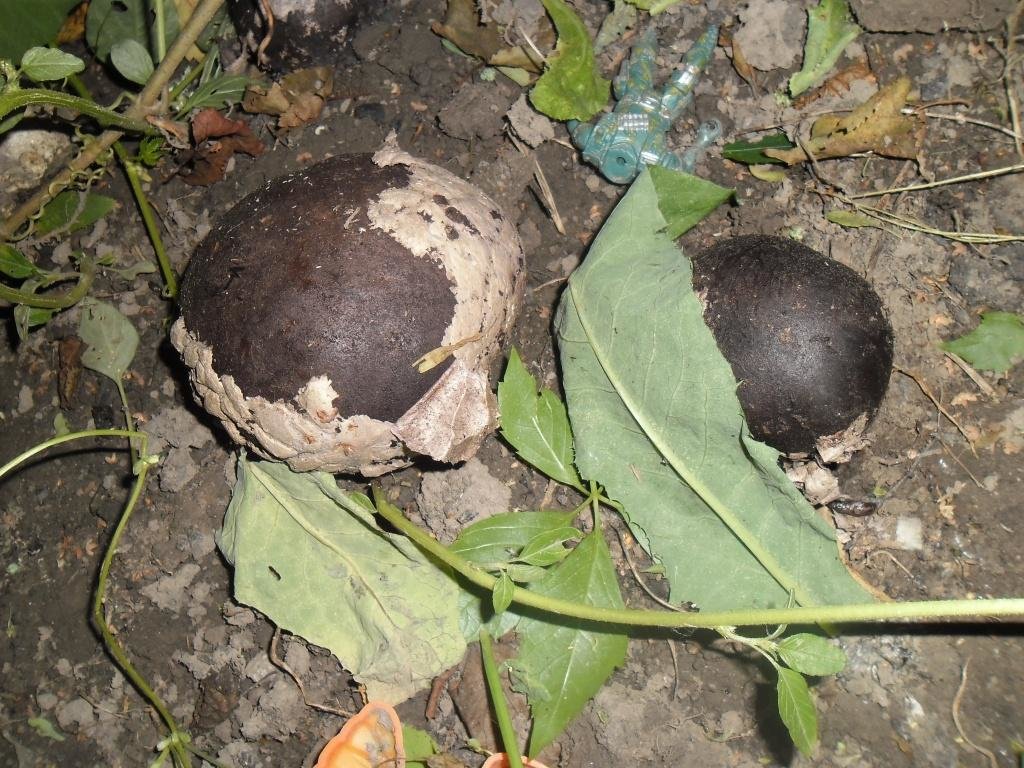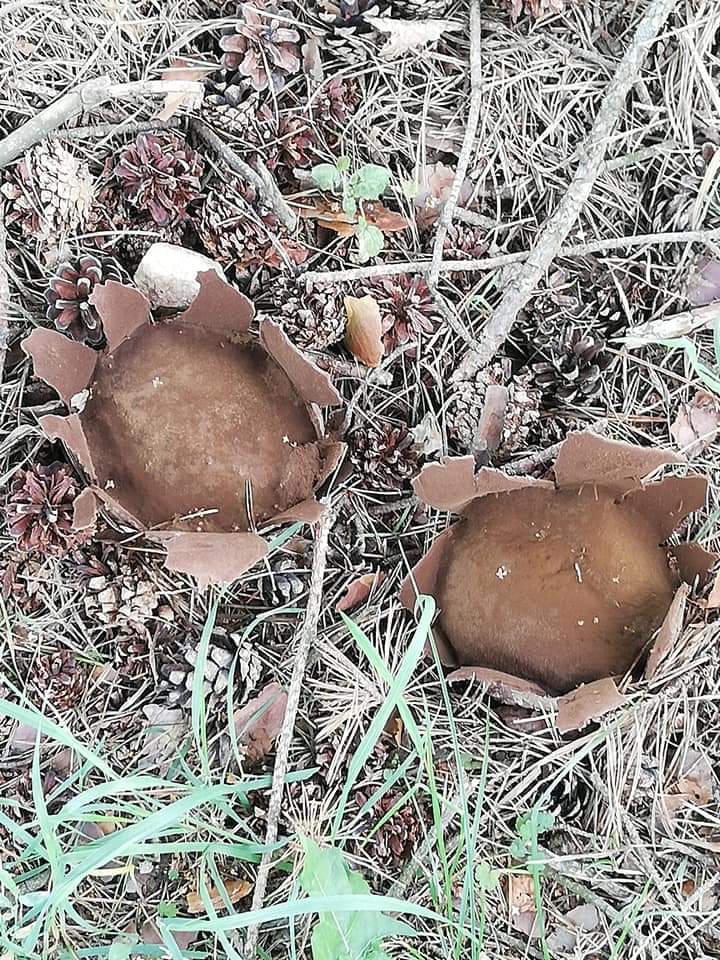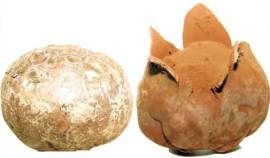Description of leathery mycenastrum
The fruiting body has a flattened-spherical or simply spherical shape, sometimes it can be ovoid or elongated. The diameter of the leathery mycenastrum is 5-10 centimeters. At the base there is a thick tapered mycelium, densely covered with grains of sand. Over time, a tubercle appears at the site of the strand.
The outer shell of the fruiting body is thin, first white, then yellow, and even later gray. When the mushroom ripens, the skin breaks into scales and falls off. The endoperidium in young mushrooms is fleshy, its thickness reaches 3 mm, after which it is corky and brittle. The upper part of the endoperidium cracks into lobe-shaped parts of an irregular shape. The color of the endoperidium is ash brown, lead gray, or light brown.
Spores are ellipsoidal or spherical, warty. The color of the spores is light brown. Spore powder of olive brown color.
The leathers resemble white balls that quickly turn yellow and crack on the outside. The flesh of a dirty olive color is visible under the cracks.

Distribution of kozhans
Leathery mycenastrum grows in forests, deserts, and is also found in pastures and other places. Most often, these mushrooms can be found in eucalyptus groves. Leathers prefer soils that are well fertilized with manure, nitrogen and other organic matter.
These are relatively rare mushrooms, they are rare. Leathery mycenastrons bear fruit from December to March. They grow mainly in desert and semi-desert zones. The remains of last year's fruit bodies can sometimes be found in the spring.
Taxonomy
Genus synonyms:
- Endonevrum Czern., 1845
- Pachyderma Schulzer, 1876, nom. illeg.
Synonyms of Mycenastrum corium (Guers.) Desv., 1842:
- ≡ Lycoperdon corium Guers., 1815basionym
- ≡ Scleroderma corium (Guers.) L. Graves, 1830
- ≡ Sterrebekia corium (Guers.) Fr., 1849
- = Bovista spinulosa Peck, 1879
- ≡ Mycenastrum spinulosum (Peck) Peck, 1881
- ≡ Scleroderma spinulosum (Peck) De Toni, 1888
- = Bovista suberosa Fr., 1829
- ≡ Endonevrum suberosum (Fr.) Czern., 1845
- ≡ Lycoperdon suberosum (Fr.) Bonord., 1857
- = Mycenastrum beccarii Pass., 1875
≡ Scleroderma beccarii (Pass.) De Toni, 1888
- = Mycenastrum chilense Mont., 1843
- ≡ Scleroderma chilense (Mont.) De Toni, 1888
- ≡ Sterrebekia chilensis (Mont.) Fr., 1849
- = Mycenastrum clausum Schulzer, 1877
- = Mycenastrum corium f. sterlingii Lloyd, 1902
- = Mycenastrum corium var. kara-kumianum Sorokin, 1884
≡ Scleroderma corium var. kara-kumianum (Sorokin) De Toni, 1888
- = Mycenastrum leptodermeum Durieu, 1848
≡ Scleroderma leptodermeum (Durieu) De Toni, 1888
- = Mycenastrum olivaceum Cooke & Massee, 1887
≡ Scleroderma olivaceum (Cooke & Massee) De Toni, 1888
- = Mycenastrum phaeotrichum Berk., 1843
≡ Scleroderma phaeotrichum (Berk.) De Toni, 1888
- = Mycenastrum radicatum Durieu, 1849
≡ Scleroderma radicatum (Durieu) De Toni, 1888
- = Pachyderma strossmayeri Schulzer, 1876
- = Scleroderma geaster var. socotranum Henn., 1897
Biological description [| code]
The fruiting body is spherical or irregular, 4–20 cm in diameter, with a wrinkled base. The exoperidium is fleshy, then papery, white, collapses with age, remaining on the surface in the form of separate scaly pieces. Endoperidium about 2 mm thick, hard, darker, cracking into irregular pieces or lobes in the form of a star.
Gleb is whitish, with a pleasant smell, rather early becomes greenish-yellow, in mature mushrooms it is olive-green and olive-brown or dark brown. Capillicum with spinous projections, up to 12 microns thick, hyaline, with an amyloid inner wall.
Spores 8.5-12 microns in diameter, spherical, covered with warts and mesh, yellowish-brown, amyloid or dextrinoid.
It is edible at a young age, does not require pre-boiling, and is used fried.
Edibility of leathery mycenastrum
Leathery mycenastrum is a good edible mushroom, but this applies only to young fruit bodies, which have a firm white flesh. The taste of kozhanov is equated to fried meat.

The similarity of leather with other mushrooms
All representatives of the genus Mitsenastrum are characterized by spherical fruiting bodies, which become flattened with age. Also, they all have a characteristic strand, which breaks off when the mushroom ripens and only one tubercle remains, so leather can be confused with any mushrooms of this genus.
Necessary measures for the protection of mushrooms
Since leathery mycenastrum is a rather rare mushroom, protection measures are necessary. A search for new deposits should be organized, which should be included in natural protected areas. In addition, the status of existing populations should be monitored. It is recommended to maintain East Siberian strains in the collection of international pure cultures.


